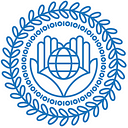COVID-19 is Stabilization in Reverse: Applying the Principles of the Global Fragility Act to Pandemic Response
Liz Hume, JD, MA, is the Vice President of the Alliance for Peacebuilding, which represents over 120 of the top conflict prevention and peacebuilding organizations working in 153 countries. She is an expert in conflict analysis, policy and programming.
Dr. Conor Seyle is the Director of Research for One Earth Future, a peacebuilding NGO with a focus on evidence-based guidance for peacebuilding.
Together these authors have written in both academic, policy, and public-facing outlets on issues of peace and security and are the lead authors of the report, Getting From Here to There: Successful Implementation of the Global Fragility Act.
COVID-19 is ‘stabilization in reverse’ and is accelerating conflict dynamics. Unsurprisingly, conflict-affected and fragile states are already highly vulnerable to shocks and destabilizing trends. The pandemic is seriously disrupting, not only health systems, but also governance, the economy, and human and food security. In Uganda, security services are using violence against protestors and, in Nigeria, small-scale riots over food are already taking place. Even in more stable countries, such as Hungary and the Philippines, democratic institutions are becoming more authoritarian. The international community’s response to COVID-19 requires careful multidimensional development assistance engagement to prevent the risk of violence and conflict. Any response must also be bold and innovative to prevent and contain the virus and prevent destabilization of fragile and conflict-affected countries. These two complex goals are wholly intertwined.
Fortunately, we are at a moment where such complex engagement is possible. In December 2019, the U.S. government passed the bipartisan Global Fragility Act (GFA), which builds on lessons learned and failures from previous U.S. government operations and empirical research. The GFA acknowledges what the U.S. experience in Afghanistan and Iraq demonstrated: sustainable peace requires more than a military victory and uncoordinated billions of dollars spent on development assistance. The GFA creates the first-ever comprehensive U.S. government strategy to tackle and prevent alarming levels of global conflict. This shift from the status quo requires, by the end of 2020, a ten-year, coordinated, preventative, multisectoral, locally-driven, and evidence-based approach in at least five stabilization and fragile countries or regions.
The next large-scale complex crisis is already here. The U.S. government must accelerate the GFA reforms now if foreign assistance is to prevent conflict, stabilize regions, and contain a global pandemic. Building peaceful societies cuts across many development sectors including health, governance, the economy and security. It is essential to develop a multisectoral approach when destabilizing trends like the COVID-19 pandemic occur in conflict affected and fragile states. This approach means that a strategy must revolve around the integration and interoperability of conflict prevention and peacebuilding in development assistance programs, including health which minimizes the potential for conflict and maximizes opportunities for peacebuilding. At the same time, there will likely be a need for stand-alone peace and reconciliation programs both during and after the crisis.
Current USAID and State Department joint COVID-19 strategy prioritizes three of four pillars: protecting American interests, bolstering health systems, and addressing complex humanitarian crises. The fourth pillar calls for preparing for, mitigating, and addressing second-order economic, civilian security, stabilization, and governance impacts. This strategy and its four-pillar approach treat stability and prevention as a second-order priority that will be worked on after the real development issues (in this case the pandemic response) are addressed. This linear and siloed approach is the antithesis of the principles in the GFA, which rightly acknowledges that prevention and stability both grow out of and affect broader questions of human security. Prevention and stability programming cannot be an afterthought. A peacebuilding lens must be integrated throughout all the other pillars including sectors listed in the fourth pillar such as economy and security. We do not have to look farther than the 2018 Ebola response in the DRC to see the consequences if such an integrated approach is not taken: health clinics were attacked, in part because the development response was not conflict sensitive, which extended the outbreak of this disease and increased the conflict dynamics.
Some lessons from the GFA are immediately applicable to the pandemic response, while others imply ways that the pandemic response can inform the larger GFA strategy which is due to Congress at the end of the year. The pandemic response must allow for less prescriptive and quicker procurement mechanisms that are faster and adaptive with longer program cycles. Earmark relief is also critical because these funding accounts are a significant detriment to the flexibility of funding required for an unprecedented global pandemic response. Additionally, local organizations are not only on the front lines but they are the best equipped for building peace and implementing programs. To achieve this goal, there needs to be smaller-scale, flexible, and risk-tolerant funding modalities that only require simple grant applications, and the selection and reporting criteria.
While the GFA strategy is not complete, the global pandemic is here. There must be a more coordinated multisectoral approach that integrates conflict prevention and peacebuilding into the pandemic response strategy from the beginning, along with other key principles of the GFA. If not, it will be business as usual, and the United States’ national security, along with the health of the world’s population will suffer considerably.
